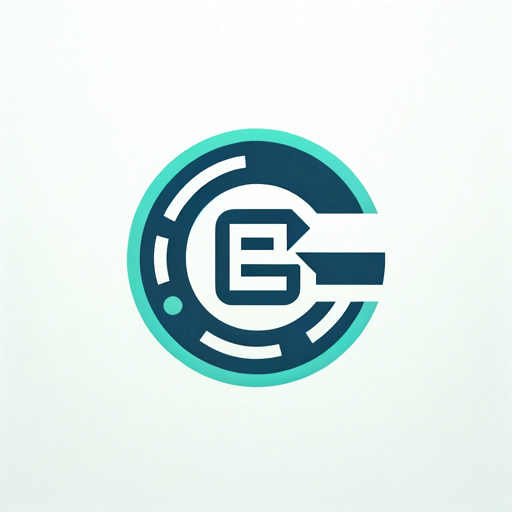web-AI-powered content and code assistant
AI that elevates your tasks effortlessly.
Related Tools
Load More
Web Browser
I can browse the web to help you find information.

Web Search!
Browse the web using Google search. Discover the latest information online by entering keywords or phrases.

Browser
I'll scrape data from multiple website URLs. Built for Internet crawling, content aggregation, and monitoring.

Web Browser Pro
In-depth Web browsing assistant with both Prior AI knowledge and Real-time Information. Cross-referencing online information with citations. browse the web to help you gather information or conduct research.

Webbrowser
Expert in web browsing and online info retrieval.

URL Website Crawler
With unrivaled capabilities and unlimited access to information, our AI is designed to scrape user data from any URL. Unleash its potential to extract valuable insights from website. Privacy-conscious and equipped, and ensures compliance with legal and e
20.0 / 5 (200 votes)
Introduction to web
Web is designed to facilitate seamless communication between clients and servers, primarily focusing on making data accessible and manageable over the internet. Its basic functions revolve around the client-server architecture, where the client (usually a web browser) requests resources from a server, which in turn delivers these resources in the form of web pages. For instance, when a user types a URL in their browser, the browser (client) sends a request to the server to fetch the corresponding web page. This page may include various media such as text, images, and scripts, which are processed by the browser to display the final content. Web serves as the foundation for hosting, accessing, and sharing content globally.

Main Functions of web
Client-Server Interaction
Example
A user visiting a website through a browser. The browser acts as a client requesting data from the server.
Scenario
A web server hosting a corporate site delivers HTML, CSS, and JavaScript files to users' browsers when requested, enabling them to view and interact with the website.
Resource Hosting
Example
An e-commerce platform hosting product images and descriptions on its web server.
Scenario
A website like Amazon hosts thousands of product images and descriptions on its servers. When users search for items, the server retrieves and delivers the requested product details to their browsers.
Dynamic Content Delivery
Example
A news website delivering personalized content based on user preferences.
Scenario
When users log into a news portal like CNN or BBC, the server dynamically generates and sends personalized news articles based on the user's location or browsing history.
Ideal Users of web Services
Web Developers
Web developers benefit from the ability to host and deploy websites, enabling them to showcase their work, build user interfaces, and implement server-side functionality using technologies such as HTML, CSS, and JavaScript.
Content Creators
Bloggers, media companies, and other content creators use web services to share multimedia content with global audiences. Web servers allow these users to host, manage, and distribute text, images, videos, and interactive content.

How to Use Web
Step 1
Visit aichatonline.org for a free trial without login, no need for ChatGPT Plus.
Step 2
Explore the available tools and choose the one that fits your task, whether for writing, coding, or research.
Step 3
Use natural language to ask questions, provide data inputs, or request specific outputs.
Step 4
Refine your queries for more accurate results and check the examples or suggestions provided by the system.
Step 5
Apply the tool to various tasks such as document generation, code suggestions, or detailed analysis across multiple domains.
Try other advanced and practical GPTs
Web Dev Guru
AI-Powered Coding Assistance

WEB PILOT
AI-powered content creation and data access.

联网版
AI-Powered Solutions for Everyone

网站设计
AI-powered web development assistance.

Resume Coach
AI-Powered Resume Optimization for Your Dream Job

Converter 👉🏼 Convert Anything
AI-powered file conversion made easy.

web
AI-Powered Solutions for Every Task

WebPilot
AI-Powered Web Assistant for All.

Epic Life: Your Hero's Journey
AI-powered transformation for your life's journey.

Consulente IA per le fatture elettroniche
AI-powered e-invoicing compliance tool

Py Builder
AI-powered Python project automation.

Rechtschreibprüfung
AI-powered tool for flawless writing.

- Content Creation
- Academic Research
- Idea Generation
- Coding Help
- Professional Writing
Detailed Q&A About Web
What kind of tasks can Web help with?
Web can assist with a wide range of tasks including content generation, code completion, debugging, academic research, and professional writing.
Do I need an account or subscription to use Web?
No account or subscription is required for basic usage. You can access a free trial at aichatonline.org without needing to log in or use ChatGPT Plus.
What are the optimal use cases for Web?
Web is ideal for content creation (blogs, articles), technical assistance (coding help, software design), research, and even brainstorming new ideas across various industries.
How does Web ensure accuracy in responses?
Web uses sophisticated language models trained on diverse datasets to provide well-informed, accurate answers. However, it’s always a good practice to cross-check crucial information.
Can Web be integrated with other tools or software?
Yes, Web can be integrated into different workflows using API access, making it suitable for automation tasks, development processes, and custom applications.